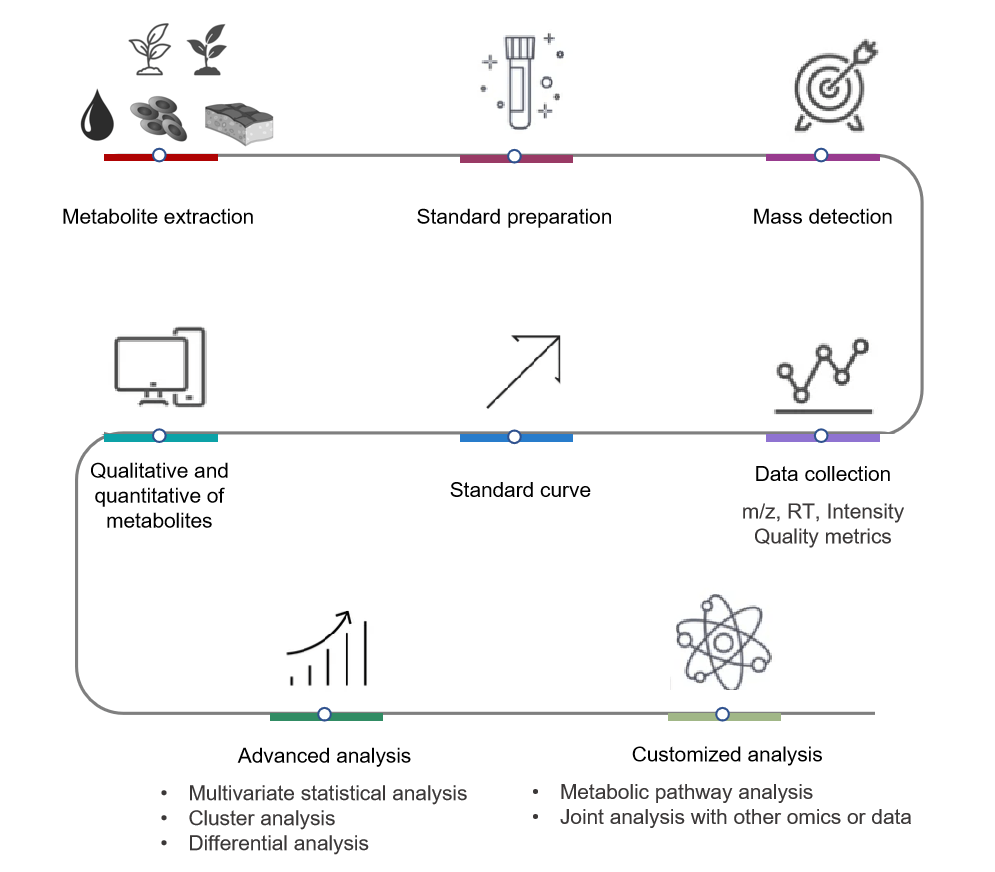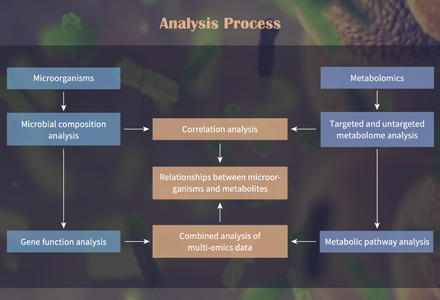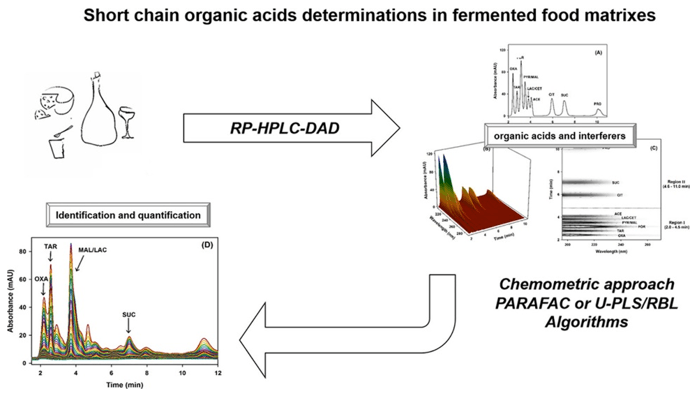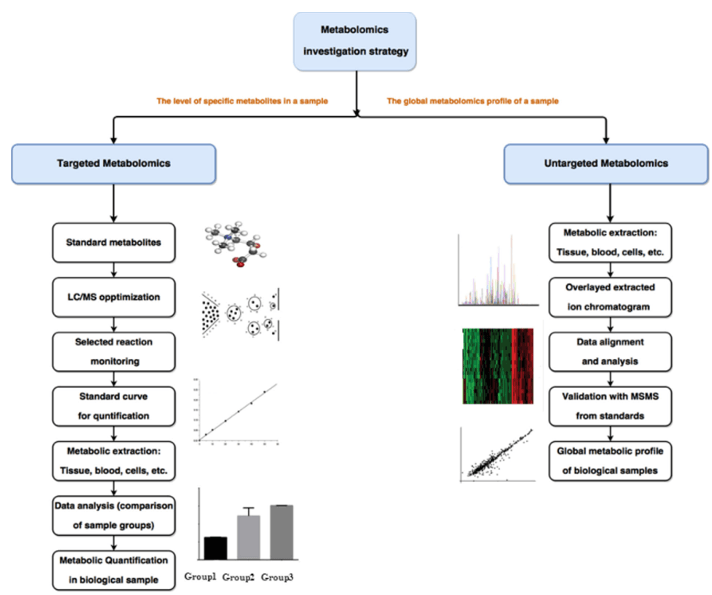Lactic Acid Analysis Service
Submit Your InquiryWhat is Lactic Acid and Lactic Acid metabolism?
Lactic acid is a compound that plays a significant role in metabolism, particularly in the glycolysis pathway. Glycolysis is a process that occurs in the cytoplasm of cells and involves the breakdown of glucose to produce energy. Lactic acid is produced as an intermediate product during glycolysis when there is a lack of oxygen or during intense exercise when oxygen supply is limited.
Under normal aerobic conditions, glucose is metabolized by glycolysis and the end product is pyruvate. Pyruvate then enters the mitochondria and is further oxidized in the presence of oxygen to produce adenosine triphosphate (ATP), which is the main energy currency of the cell. When oxygen supply is reduced, such as during intense exercise or in the presence of tissue hypoxia, pyruvate is converted to lactate. This conversion is catalyzed by lactate dehydrogenase (LDH). This process allows the regeneration of the coenzyme NAD+ (nicotinamide adenine dinucleotide) from its reduced form NADH, which is necessary to maintain glycolysis. The production of lactate allows the cell to continue producing ATP, albeit less efficiently compared to aerobic conditions. During intense exercise, the accumulation of lactic acid in the muscle leads to a decrease in intracellular pH, which contributes to feelings of fatigue and burning during strenuous exercise. This lactic acid accumulation may also be associated with the muscle soreness and stiffness that occurs after exercise, known as delayed onset muscle soreness (DOMS).
Lactate metabolism goes beyond exercise physiology. It is involved in other important metabolic processes including the Cori cycle, gluconeogenesis and the Warburg effect.
The Cori cycle refers to the process by which lactic acid produced in muscle tissue is transported to the liver where it is converted to glucose through gluconeogenesis. This glucose can then be released into the bloodstream and used by other tissues as a source of energy. Gluconeogenesis is a process in which lactic acid and other substrates are converted to glucose in the liver or kidneys. This is an important mechanism for maintaining blood glucose levels, especially during fasting or prolonged exercise when glucose stores are depleted. The Warburg effect, observed in cancer cells, includes a shift toward increased glycolysis and lactate production, even in the presence of oxygen. Cancer cells exhibit high rates of glucose uptake and lactate production, which contribute to tumor growth and survival.
 Molecular structure of lactic acid
Molecular structure of lactic acid
Our Lactic Acid Analysis can be used to
Metabolic Studies:
Lactate analysis allows researchers to gain insight into the metabolic pathways and energy metabolism of various organisms. By measuring lactate levels, you can assess the efficiency of glycolysis, identify metabolic abnormalities, and study metabolic adaptations under different conditions.
Microbial Fermentation:
Lactic acid fermentation is a key process in the production of fermented foods, such as yogurt and sauerkraut, as well as industrial applications like biofuel production. Accurate analysis of lactic acid levels enables researchers to optimize fermentation processes, monitor microbial activity, and improve product quality and yield.
Cancer Research:
The Warburg effect, characterized by increased glucose consumption and lactate production in cancer cells, is a significant phenomenon in cancer research. Lactic acid analysis aids in studying the metabolic alterations associated with cancer, providing valuable insights into tumor metabolism and potential therapeutic targets.
Exercise Physiology:
Understanding lactic acid production and clearance during exercise is essential for optimizing athletic performance and managing exercise-induced fatigue. Lactic acid analysis helps researchers investigate the relationship between lactate accumulation, exercise intensity, and endurance, contributing to the development of training strategies and performance enhancement.
Lactic Acid Metabolism Assay at Creative Proteomics
- Cutting-edge analytical techniques: Creative Proteomics employs advanced analytical techniques, including GC-MS, LC-MS and HPLC, to ensure accurate quantification and identification of lactic acid in complex matrices.
- Customized solutions: Our team of experienced scientists works closely with clients to develop individualized strategies and deliver actionable results.
- Quality data and timely delivery: Creative Proteomics is committed to providing researchers with high quality data and timely delivery of results. Reliability and reproducibility of lactate analysis is ensured through stringent quality control measures and optimized workflows, enabling researchers to make informed decisions based on accurate data.
Technical Route of Targeted Metabolomics of Lactic Acid

Feedback to Customers
- Experimental steps
- Related mass spectrometry parameters
- Part of the mass spectrum picture
- Raw data
Project Cycle
- A standard experiment and analysis process takes about 1~4 weeks.
Creative Proteomics offers several approaches to metabolomics studies, delivers precise and detailed data and analysis report. We can also customize the methods or establish new methods together with our collaborators, so they are fit-for-purpose and meet your specific needs. If you have any questions or specific requirements, please feel free to contact us.
References
- Griffiths W J, Koal T, Wang Y, et al. Targeted metabolomics for biomarker discovery. Angewandte Chemie International Edition, 2010, 49(32): 5426-5445.
- Roberts L D, Souza A L, Gerszten R E, et al. Targeted metabolomics. Current protocols in molecular biology, 2012, 98(1): 30.2. 1-30.2. 24.
- Yu N, Wei S, Li M, et al. Effects of perfluorooctanoic acid on metabolic profiles in brain and liver of mouse revealed by a high-throughput targeted metabolomics approach. Scientific Reports, 2016.
- Mohammed A, Hussain R M, Ur R N, et al. De novo transcriptome sequencing and metabolite profiling analyses reveal the complex metabolic genes involved in the terpenoid biosynthesis in Blue Anise Sage (Salvia guaranitica L.). DNA Research (6):6.









